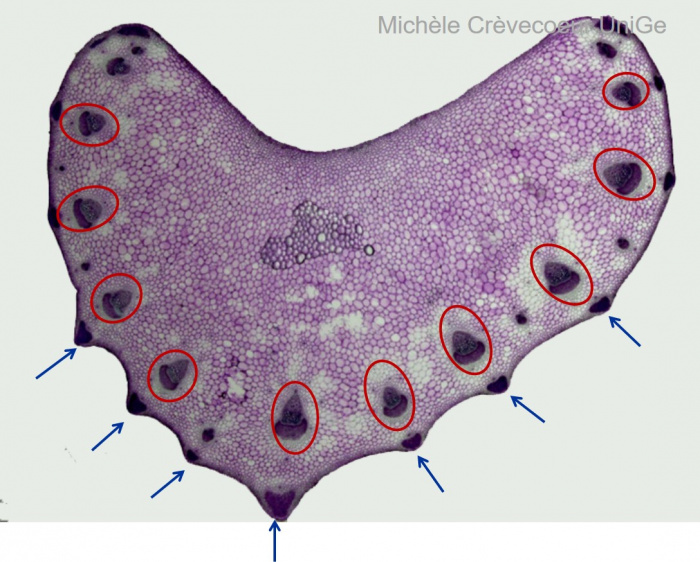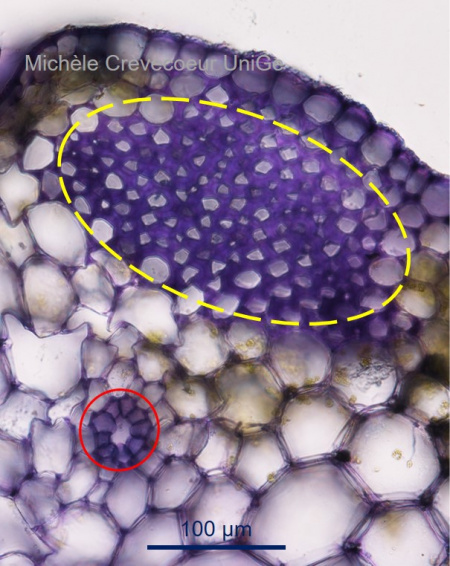Cross section in a petiole of celery branch.
The celery branch, Apium graveolens, is a biannual /biennial herbaceous plant that belongs to the family Apiaceae. It is a vegetable cultivated for well-known nutritional and medicinal properties, and it is highly appreciated for its fiber content. The petioles that are known by the name of stalks are preferred for consumption over the leaves. They are long, thick and a pleasant smelling emanates from them when they are cut. This is due to the secretory ducts they contain and that are easily visualized on fresh handmade or razorblade sections.
Below a cross section made with a razor blade that is successively: stained 1 min with 0.05% toluidine blue, washed three times in water, placed in a drop of water directly on a microscope slide and finally carefully covered with a coverslip.
The blue arrows indicate regularly spaced strands of angular collenchyma located at the periphery of cortical parenchyma, just below the epidermis. They correspond to prominent abaxial ribs of the petiole. Red circles indicate the vascular bundles that are arranged on a semicircle, with xylem oriented towards the center of the organ. They arer positioned opposite to collenchyma strands.

Below: part of the cross section with angular parenchyma (yellow dotted lines) and a secretory duct (red circle) viewd at high magnification on the right. it is surrunded by a layer of cells.

